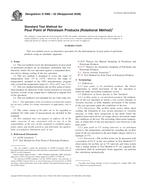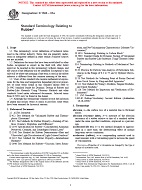1.1 This guide provides minimum requirements for general-purpose scales, balances, and standard masses used in testing soil, rock, and related construction materials.
1.2 This guide provides guidance for evaluating, selecting, and specifying general purpose scales, balances, and standard masses used in testing soil, rock, and related construction materials.
1.3 The accuracy requirements for balances and scales are specified in terms of the combined effect of all sources of error contributing to overall balance performance. The measurement of specific sources of error and consideration of details pertaining to balance construction have been intentionally avoided.
1.4 This guide does not include requirements for balances and scales having accuracies greater than those generally required in testing soil, rock, and related construction materials.
1.5 This guide does not apply to nongraduated balances.
1.6 This guide does not address the methods used to verify or quantify specific parameters dealing with balances and scales. For a description of tests used in evaluating balance performance, see NIST Handbook 44.
1.7 This guide is not intended to be used as a specification for the purchase of balances and scales.
Note 1 – The National Institute of Standards and Technology (NIST), formerly the National Bureau of Standards (NBS), and the International Organization of Legal Metrology (OIML) publish standards or practices that specify construction requirements as well as performance guides for balances. ASTM, OIML, and NIST publish construction standards and tolerances for standard masses.
Note 2 – The terms “mass” and “determine the mass of” are used in this standard instead of the more commonly used terms “weight” and “weigh” to comply with standard metric practice. In addition, the term “standard mass(es)” is used instead of standard “standard weight(s)” when referring to a piece of material of known specified mass used to compare or measure the mass of other masses.
1.8 This guide offers an organized collection of information or a series of options and does not recommend a specific course of action. This document cannot replace education or experience and should be used in conjunction with professional judgement. Not all aspects of this guide may be applicable in all circumstances. This ASTM standard is not intended to represent or replace the standard of care by which the adequacy of a given professional service must be judged nor should this document be applied without consideration of a project’s many unique aspects. The sword “Standard” in the title of this document mans only that the document has been approved through the ASTM consensus process.
Product Details
- Published:
- 01/10/2002
- Number of Pages:
- 5
- File Size:
- 1 file , 53 KB
- Redline File Size:
- 2 files , 96 KB


